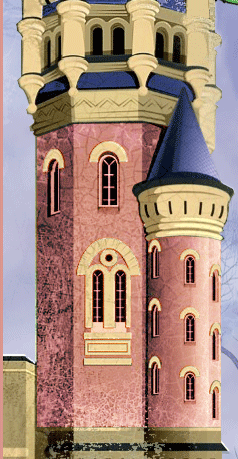 |
Our Curriculum
The curriculum at Children's Palace is a developmental-interaction model that is based on the whole-child where all aspects of early childhood development are of equal importance. Our curriculum will follow the PLAN model, which consists of play, learning, art and nurturing, all of which are integrated and interdependent. The environment is non-hurried, noncompetitive, age appropriately structured, challenging, creating and inviting and meets the needs of the child. The environment is also homelike and is loving and supportive so that the child can experience happiness and security.
Play
Play is the child’s way of meeting, greeting, responding to, and mastering his world. The challenge for the teacher is to integrate play into a curriculum without changing its spontaneous, pleasure full nature. Teachers will allow the child more opportunities to choose and experiment with their surroundings. Play will stimulate the learning process by promoting independent thinking and problem solving. Through play children bring together prior learning, develop creative thinking and enlarge their experiences.
Learning
Learning is the cumulative process through which children gradually acquire skills and knowledge and apply them to gain understanding about themselves and their environment. Learning skills are integrated into the curriculum through direct and indirect experiences that will help thinking and establish competencies. Children learn through active, self-initiated channels. The teacher will encourage investigation, questioning, and reasoning. She encourages them to discover things for themselves.
Art
The child's development and early experiences in the arts plays an integral part in the PLAN curriculum. The arts are to include all creative constructs or experiences that occur as a child interacts with his environment. Art is not just arts and crafts, but is important to all play centers and to all learning experiences. The arts is whatever a child wants to play with or think about or imagine; it is an extension of one's self. As an artist, the child is a creator. A child expresses what he knows, experiences what he needs to know, and experiments with the unknown.
Nurturing
A center nurtures children by giving serious thought to social/emotional factors that influence a child's development and a classroom climate. By training in area of personal care, emotional well-being, safety, health and literature, social courtesies, moral and character development, and important practical life skills will help socialize children through positive and meaningful interactions preparing them to enter the larger society. It is important to nurture children with a creative atmosphere that recognizes and respects all people. By example and by guidance teachers, with commitment and follow-through, can train children.
|
 |
 |
|


